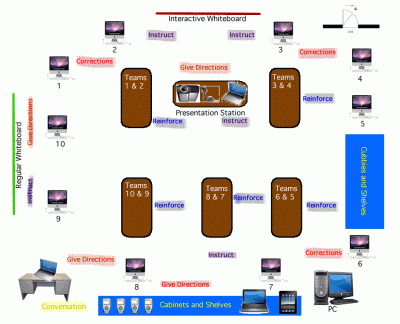From a few of the North Cascades and Olympic Science Partnership (NCOSP) Learning Community Forums on the “Four Hats of Leadership†based on The Adaptive School: A Sourcebook for Developing Collaborative Groups by Garmston and Wellman we learned about the following:
•Consulting (use of specialized knowledge to address nontrivial problems, best applied where trust and commonly goals exist, translating knowledge from one situation to a new context)
Something has stuck with me from the forum on Presentation that has been driving me crazy. Driving me crazy partly because it’s difficult for a classroom to do and partly because being aware of it makes me want to fix it! The dreaded concept is that of contamination. Some tips and tricks we were taught I try to remember for those few times a year that I present to staff and colleagues. One of the most important things I took away was to make whatever topic you are discussing, especially controversial topics, the center of attention so you aren’t linked with any negative emotions toward the topic. Using an easel or whiteboard a presenter will continually make sure to put the topic clearly on display and point to it if tempers rise. Keep the hot tempers on the easel or the whiteboard. It was recommended that we use two easels because once one easel has been “contaminated” by negative emotions it makes it more difficult to get past those emotions on that easel. With a whiteboard I guess you can move to the other end or hopefully another whiteboard.
The idea of contamination was discussed as it applies to a classroom and the classroom teacher as presenter. If you teach from a spot in your classroom you should not do other things from that spot. For example, say you are teaching from your typical spot and a kid acts up. By disciplining the child from your teaching spot you contaminate that spot. For better or for worse every student in your classroom feels some disciplining type of emotion when you disciplined that one child and emotional memory is strong on remembering place as well as feeling. So when you try to teach from your usual spot again your students may subconsciously feel negatively due to the disciplining you did from there. Same goes for conversation. If you start engaging a student or a small group from your whole group spot you contaminate it because it sends a mixed signal to the whole class. Is that the spot I need to be listening or if he’s in that spot speaking is that something I can ignore or begin daydreaming?
I used a classroom layout of my room and put labels on the different spots I use and what I typically use them for in an attempt to keep each spot only for specific actions. In the image below (click on it to view it full size) I try to keep my giving directions spots, separate from my giving instruction spots, and my correcting or disciplining spots, and my reinforcing (usually done to small teams) and conversation spots. Maybe I got too convoluted. My biggest fail is forgetting to move away from my giving directions for instructing spots to discipline. It’s just not always convenient to move, ask a kid to fill out a behavior form, then step back into the teaching spot and continue. Ugh. What do you do? Am I obsessing when I shouldn’t be?
I tried to look up more information on contamination. It was not easy as there are too many other things that can get contaminated but I did find this: Are you guilty of contamination? From Communication Breakdown. It was exactly what I remembered from the forums. It’s always going to be on the back of my head. I wonder if I’ll ever get good at keeping my spots from getting contaminated?








































































